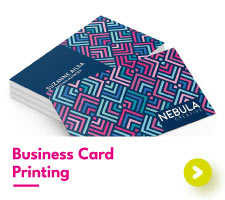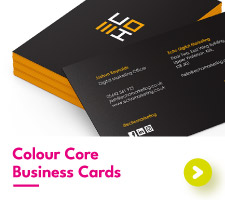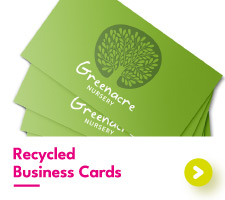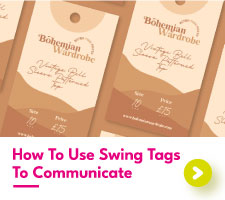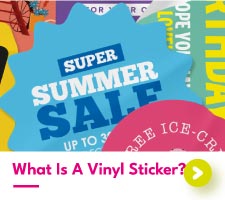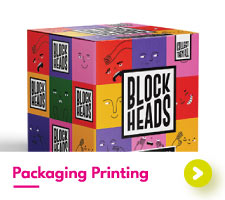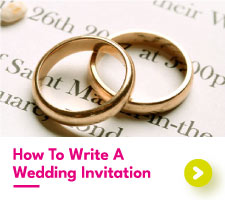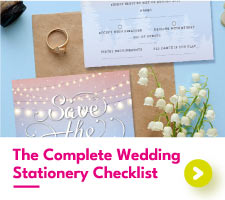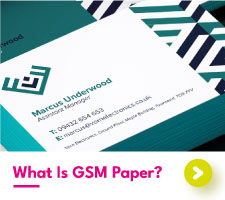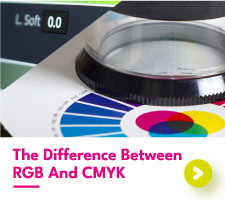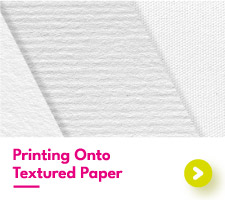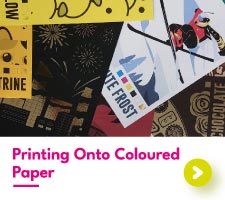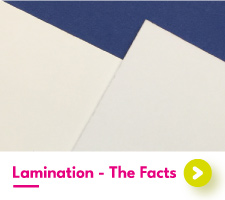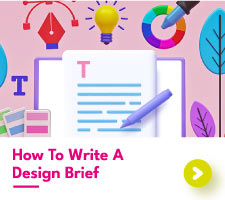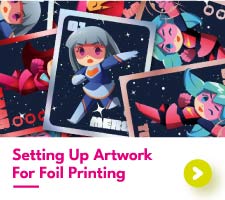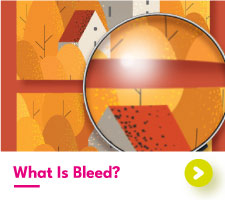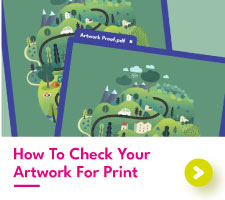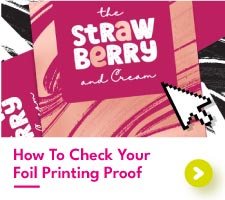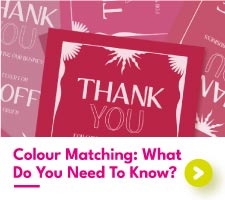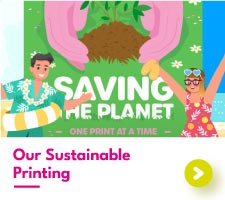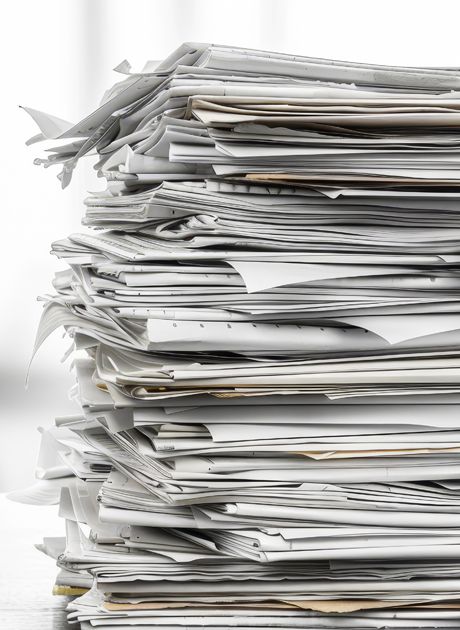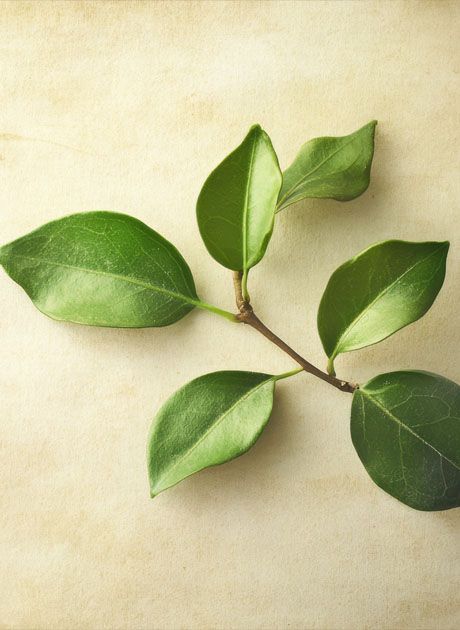Printing Onto Textured Paper
If you’re tantalised by textured paper and truly drawn to the tactile sensation that it can offer your designs, this is the article for you. Here we’ll give you the knowledge to understand why you should have a professional print service handle the process to ensure the best results, and of course why that should be us! Let’s begin.
A Bit About Home Printing
For standard-issue domestic print, the vast majority of printing is done on smooth white paper, whether it’s gloss, silk, or uncoated. This type of paper is perfectly suitable for most home printing needs. However, when creativity enters the picture, other kinds of paper are considered, and weighted, textured paper often comes to mind. Textured paper can provide a unique experience and an elevated visual appeal, which is particularly important if you want to design a flyer, business card, or professionally printed leaflet that stands out from the competition.
Getting the Best Out of Textured Stock
Whilst home printers will do perfectly fine with standard paper stock without texture if you want to get the best print-on-textured paper experience, you’re going to need some precision equipment, that’s where we come in! Our always-updated technology is designed to work along with the quirky intricacies of textured paper so that you can have that luxurious stock alongside absolute precision print.
Further to this, our mechanisms are designed to handle stock that is much thicker than copy paper. A standard home printer can only comfortably handle up to around 160gm and even then quality may vary. In short, when considering can you print on textured paper? Home printers don’t yield good results when using weighted or textured paper stocks.
Exploring Textured Papers
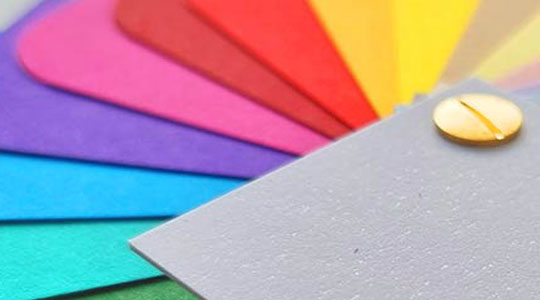

There are numerous fantastic textured papers available, with brands like G.F Smith offering a vast array of beautiful options (hence why we source our stock from them). Specialist textured papers are also often coloured, adding another layer of customisation to your printing projects, although bright white textured papers are available as well. Textured papers can range from subtle, lightly embossed surfaces to heavily textured finishes that make a bold statement. Each type of textured paper can convey a different mood or aesthetic, making it crucial to choose the right one for your specific project.
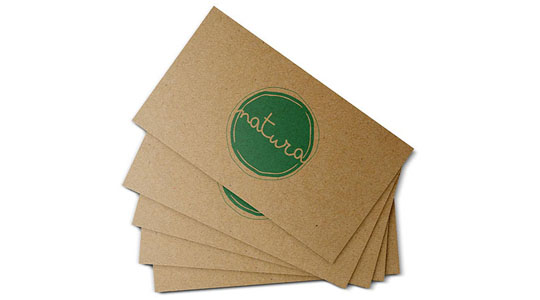

At our facility, we boast the widest range of paper types and colours, including pearlescent paper, Kraft, Color Core, and eco-friendly options. Pearlescent paper adds a shimmering effect to your prints, perfect for elegant invitations or special announcements. Kraft Business Cards, for instance, have a distinct feel and are made from 100% recycled material, offering a rustic and eco-conscious option for your branding needs. Color Core paper features a coloured core that adds a pop of colour to the edges of your prints, making them stand out even more.
Uses of Textured Papers
The most commonly requested paper we print on is a pale cream (or off-white) paper, typically used for textured greeting card printing. In fact, the majority of textured paper inquiries we receive are for this exact purpose. The soft, inviting colour of pale cream paper coupled with its textured surface creates a sophisticated and timeless look that is ideal for wedding invitations, formal event announcements, and other special occasions. With that in mind, we’ll use this as an example as we discuss the pros and cons of using textured papers.
Printing Onto Coloured Paper
When printing colour images onto coloured paper, it’s crucial to remember that the paper's colour will affect the print's colours. Coloured paper can add depth and interest to your prints, but it also requires careful consideration of how the ink colours will interact with the background. For instance, printing a light-coloured design on dark-coloured paper might result in muted colours or reduced visibility of the details. We also have an article about printing onto coloured paper which covers digital printing, but the effect is the same for litho printing as well. It provides valuable insights into how to achieve the best results when working with coloured paper.
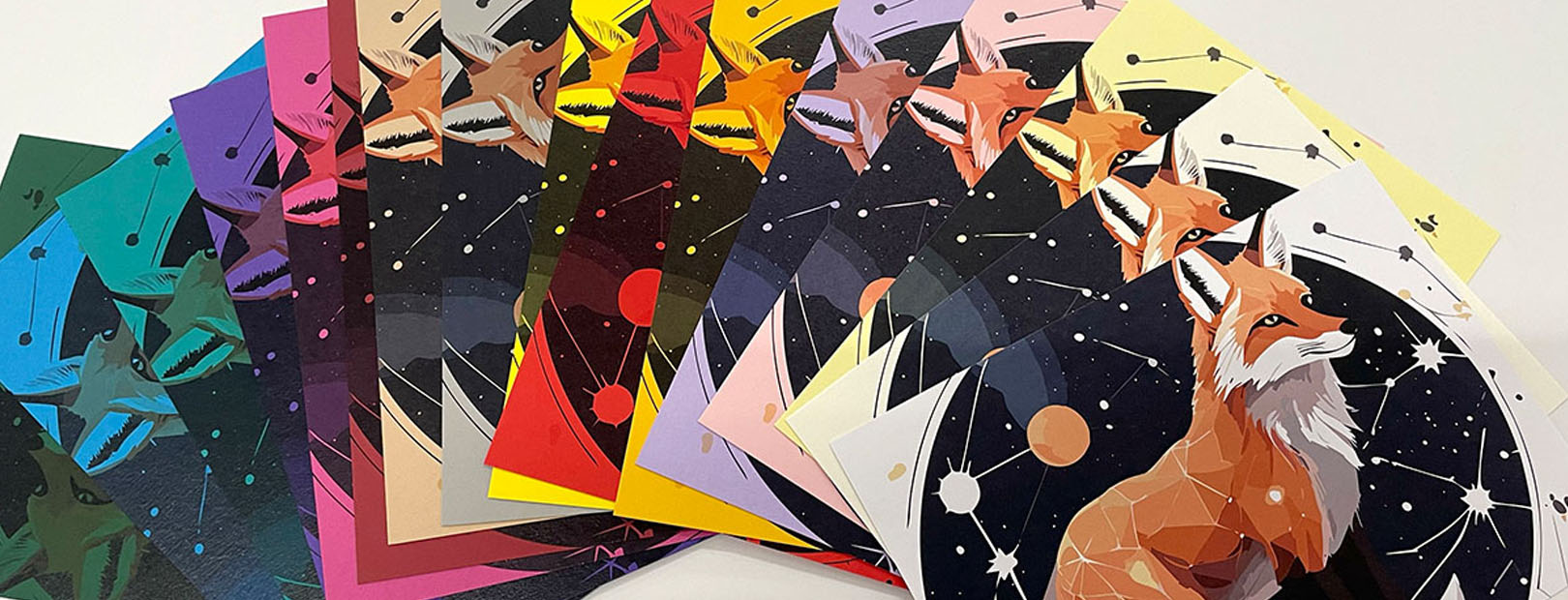

Digital Printing
Digital printing can encounter difficulties with some textured papers. Digital printing machines use hard rollers, and the toner can fall into the ‘gaps’ in the textured paper, leading to unsatisfactory results. The toner may not fuse to the paper properly, which can cause the toner to rub off once printed. This issue arises because the toner powder doesn’t bond with the paper during the printing process as it does with smooth paper stock. However, printing onto textured papers with a flatter pattern can work well.
Despite these challenges, some people appreciate the mottled effect digital printing can produce on textured paper. If you’re aiming for an old-world look, the issues with digital printing might actually enhance your prints' appearance. As always, it’s wise to run some print tests, and with digital printing, you can do this inexpensively. This approach is particularly useful for digital poster printing, for example, where the unique texture and appearance can add to the visual appeal of the poster.
Litho Printing
The lithographic printing process uses wet inks and rubber rollers, making it much more suitable for textured papers. This method can better apply ink to all the tiny recesses in textured paper, resulting in a cleaner and more thorough print. The flexibility of litho printing allows for a wider range of textured papers to be used without compromising the quality of the print. This process can handle intricate designs and fine details better, making it ideal for high-quality, professional printing projects.
The main drawback of litho printing is cost. Litho machines need to be set up before each print job, which incurs a setup charge. This means you likely won’t know what the final result will look like until all the prints are done unless you’re willing to pay for a full setup just for a few test prints. However, for large print runs or projects where quality is paramount, the investment in litho printing is often worth it. The richness and precision of litho prints on textured paper can make a significant difference in the final product.
Cost of Textured Papers
Unfortunately, textured papers are more expensive than regular gloss, silk, and uncoated papers. This higher cost is due to the complexity of their manufacture and their smaller production quantities. Textured papers often require specialised production processes and materials, which contribute to their higher price point. Additionally, because they are produced in smaller batches, the economies of scale that apply to standard paper types are not as effective for textured papers.
The cost can be a significant drawback, but it depends on the quantity of printed pieces you need. If you're printing just a few invitations, you might not require much paper. Even at ten times the cost of regular smooth white paper, it might not break the bank. However, using litho printing will incur the setup charge, which can make the cost per piece relatively high if you only need a few copies. For larger print runs, the cost per piece decreases, making it more feasible to use textured paper. We always ensure to buy papers from sustainable sources, so you can have peace of mind when it comes to the environment.


Need To Know More About Printing on Textured Paper?
With so many paperweights, colours, and textures available, your choices are practically endless when creating unique prints. Textured papers offer a wide range of possibilities for adding character and individuality to your printed materials. But if all that choice feels overwhelming, or if you’re unsure which paper type would best suit your prints, just contact our team with your questions!
We’d love to help you create some truly exceptional prints on textured fine arts papers. Our expertise and wide selection ensure that you’ll find the perfect paper to match your vision and make your printed materials stand out. Don’t leave things to chance by using domestic print equipment, choose Aura Print for premium textured cards and the best equipment in the business.

 USA
USA FR
FR
